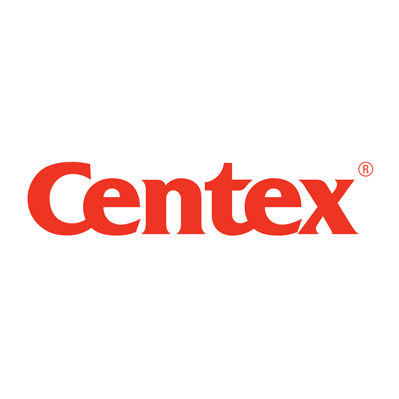Description
Centex Corporation is one of the most successful diversified building companies in the United States, with products and services ranging from new home construction, manufactured housing, and industrial construction, to mortgage lending, pest control, and construction contracting. Centex protected itself from the cyclical nature of building construction not only through diversification but also through geographical expansion. As of the late 1990s, the company was involved in construction in 20 states across the nation.
History
Early History
The company got its start just after World War II, a time characterized in the United States by growth and consumerism. In 1945 Texas native Tom Lively "scraped together $500 and drew up his 5 feet 6 inches to talk business with Ira Rupley, a successful Dallas land developer," as a 1956 Newsweek article related. A young entrepreneur, Lively had "left his home town of Whitewrite, Texas, in 1937, and for years had scraped along selling clothing and hardware and 'a little of this and that' before settling on real estate."
Rupley, who had made his name in home construction, entered into partnership with Lively on a still-unnamed building company. They began "modestly enough with a scattering of single and double houses around Dallas," noted Newsweek. In 1949 they undertook their first major project, a large subdivision of 300 houses that sole for $6,500 each. The success of the subdivision led to the 1950 formation of the Centex Construction Company.
For its first few years, the company concentrated its building efforts exclusively in Texas. However, by the mid-1950s Centex was ready to expand. One of the company's early projects was also an historic one. Centex built Elk Grove Village near Chicago, America's first master-planned community. This was the forerunner of modern master-planned areas, and boasted some 7,000 homes, all built by Centex, by the 1990s.
Diversification and Expansion: 1960s--70s
By 1960 Centex Construction Company had produced some 25,000 residences in several states. The company began expanding its operations to include the production of housing materials. Centex opened a cement manufacturing business with facilities in Texas and Nevada, then bought out a Dallas contractor, J.W. Bateson, which had specialized in commercial buildings. Reflecting its new diversification, the company changed its name during the 1960s to Centex Corporation.
In 1969 Centex went public, selling 500,000 shares of common stock. By this time the builder's net worth stood at about $10 million, with gross revenues of almost $100 million. By the 1990s, its stock would be traded both nationally and internationally.
As Centex moved into the 1970s, it increased its scope of operations. The company acquired two leading builders, one in Chicago, the other Dallas-based Fox & Jacobs, then the largest builder of single-family homes in the Southwest. Fox & Jacobs' strategy for producing affordable housing seemed to be working. A 1976 Fortune article noted that the Centex subsidiary was able to "turn over its $1 million inventory of building materials 15 times a year. The extraordinarily fast turnover is the key to the company's ability to hold down prices and still keep profit margins healthy on houses in a wide variety of sizes." Expansion continued as Centex acquired Frank J. Rooney, Inc., Florida's largest general contractor.
The 1970s became a peak time for building, and as need dictated, Centex expanded its cement business in Texas and became a partner in another cement plant in Illinois. Centex also opened an oil-and-gas plant that would come to be named Cenergy. However, for all its diversification efforts, Centex was still primarily associated with one region of the United States. Explained William Barrett in a 1990 Forbes article, "In fiscal 1979, 72 percent of the company's ... homes were built in Texas, a dangerously high concentration. Centex executives started cutting back there and expanding elsewhere before the economic bust set in, but not nearly fast enough." Per-share profits subsequently fell 59 percent, from $3.44 for the fiscal year ending March 1981 to $1.41 the following fiscal year.
Beyond Texas in the 1980s
A crash in Texas construction followed the plummet in oil prices in 1986 and the subsequent failure of a number of Texas savings and loans. Although Centex was affected, its home construction in other parts of the United States kept the company afloat. However, the company owned $76 million worth of land that it was not practical to develop in the collapsed Texas market. In 1987 Centex established a new subsidiary, Centex Development Company, to oversee the land. The same year, Centex invested in further diversification, moving into medical facility construction with the subsidiary Centex-Rodgers Construction.
A rebound of sorts began by the late 1980s, with Centex's homes numbering more than 100,000. That decade saw the company increase its market from eight cities to 35 (by 1992 that number would rise to 39) through a combination of new business launches and acquisitions. One particularly key acquisition was that of the John Crosland Company, a major name in the Carolinas.
At the same time, Centex was also trimming and consolidating its forces to build a stronger organization. The oil-and-gas subsidiary Cenergy, for example, was spun off as a separate company in 1984; this divestment more firmly planted Centex in the construction business.
By the early 1990s, Centex operated several subsidiaries, all aimed at supporting the building business. One offshoot was Centex Mortgage Banking, which by 1985 had changed its name to CTX Mortgage Company and had expanded into all of the builder's major markets. Its purpose was to establish home prices and facilitate mortgages for Centex customers. According to company history, CTX initiated title and insurance operations, thus clearing the way to develop real estate as well as build on it. That development subsidiary made its debut in 1987 as Centex Development Company. By fiscal 1992, CTX Mortgage Co. had cleared $2.5 billion in home loans.
Centex banking interests did not end there, however. The corporation ran its own savings and loan institution, Texas Trust Savings Bank, FSB. The smaller interest provided just one percent of Centex's total 1992 revenues, with the bulk of incoming money (53 percent) coming from the building and mortgage banking subsidiaries. Contracting and construction services were also a big part of Centex's subsidiary interests. With Centex Cement Enterprises, which later changed its name to Centex Construction Products, the company had the ability to produce and deliver not only cement but also ready-mix concrete and gypsum boarding.
It was the homes themselves, however, that brought Centex into the public eye. A typical Centex home was somewhat unique; a staff of three in-house architects would trek to different building sites around the United States to determine just the kind of residence that would fit the development best. With the architects designing upward of 300 home concepts each year, there were plenty of options from which to choose. Thus, a "typical" Centex home could span from 900 to over 5,000 square feet, and cost from as little as $50,000 to as much as $1.1 million. (The higher-end projects were sold under the name Centex Custom Homes.)
Centex also involved itself with "Homes Across America," a building initiative of Habitat for Humanity. Habitat was formed to provide volunteer-constructed, low-cost homes for those who otherwise could not afford housing. Centex participation resulted in activity in all of its markets; the company announced in 1992 that 23 Habitat homes would be built in the following year.
Though its primary focus was on residential homes, Centex had a hand in the development of some public buildings. Contracts for 1992 included Veterans Administration medical centers in Detroit and Indianapolis; hospital expansions in San Diego and Miami; a wastewater treatment plant in Hot Springs, Arkansas; and even a Wal-Mart store in Paducah, Kentucky. Other high-profile Centex projects included Cinderella's Castle, EPCOT Center's Land Pavilion, and the Grand Floridian Beach Resort, all built for Disney World in Orlando, Florida.
The company's success could be attributed in part to the team-building attitude demonstrated by its top managers. Indeed, "in an industry famous for its flamboyant, ego-driven characters, CEO Larry Hirsch and his crew are quiet, low-key types who keep pretty much to themselves," reported Barrett. When CEO successor William J. Gillian was introduced, a New York Times article quoted a securities analyst as remarking, "One of the beauties of Centex is that they are decentralized. The company has demonstrated its ability to grow and to build its markets without running into the control problems that have plagued others." Centex described its business plan as based on a "3-D" strategy: diversify, decentralize, and differentiate.
Industry Leader in the Early 1990s
Whatever the strategy, it resulted in top scores for Centex. A Builder survey of America's top 100 building manufacturers ranked by closings rated Centex number one in 1992. Its unit output (9,184) easily outdistanced second-place, Michigan-based Pulte Homes (6,493). As Builder reported, Centex also posted a 29 percent increase in closings over 1991, as well as a ten percent increase in gross revenues covering the same period.
Although the early 1990s was not a banner period for the home building industry, conditions had begun to improve. While hardly recession-proof, Centex took advantage of the times. Then-CEO Larry Hirsch even remarked to Forbes, "I think a national recession would be a tremendous opportunity for Centex." As Forbes writer Barrett explained, Hirsch meant that a recession would "drive down the cost of land and interest rates--the bread of life for home builders--and would almost certainly weed out some smaller, highly leveraged competitors."
These predictions proved correct. By late 1992, with a slow recovery in the works, housing interest rates dropped to new lows and sales began to take flight. "Wall Street has started to appreciate home builders as manufacturers of a basic consumer product," a securities analyst told Builder. Centex benefited, posting 1992 revenues of $2.3 billion, with the high margins attributed to improvements in both the home-building and mortgage banking areas. (The company claimed the distinction of never having reported either a quarterly or an annual loss since becoming a public company.)
For all Centex's success in Texas, Florida, and other areas, one important region proved difficult for the company to penetrate. The company entered highly competitive Southern California several years before, but the area proved "a tough market to crack," as Centex president Tim Eller told Builder. Eller noted, however, that the shaky economy "has given us an opening we needed. We expect to increase our volumes there significantly."
Centex Construction Products benefited from an increase in demand for cement, aggregate, concrete, and wallboard in the mid-1990s. Its revenues nearly doubled in 1994. That year Centex took the subsidiary public, although it retained 56 percent of the stock after the initial public offering. In a somewhat unusual set-up for an IPO, Centex Corporation not only retained all of the offering proceeds, it left Centex Construction with an increased debt load. With the company's strong cash flow, the increased debt was not seen as a problem by analysts.
Although rising interest rates had slowed new home construction and had affected the company's mortgage banking subsidiary in the early 1990s, Centex enjoyed a leap in net income in 1993, from $35 million in 1992 to $61 million. In 1994 net income had risen to $85 million on revenues of $3.2 billion.
In the mid-1990s the company made several changes in its stable of subsidiaries. In 1994 Centex sold its remaining savings and loans operations. The same year, it began a joint venture that would build assisted living centers for Alzheimer's sufferers, as well as luxury homes in the United Kingdom. In 1995 the company purchased Vista Properties Inc., a $115 million acquisition that provided 3,500 acres of land in seven states to Centex for residential, commercial, and industrial development.
Centex diversified into two new industries in 1996: pest control, with the purchase of Environmental Safety Systems, and security systems, with the purchase of portions of Advanced Protection Systems. Although both acquisitions moved Centex into new areas, the company tied them into its traditional business by selling the services to its new home buyers.
Centex's expansion and diversification continued into the late 1990s. In 1998 the company purchased 80 percent of Cavco Industries, a maker and retailer of manufactured housing based in Phoenix. Cavco homes generally were priced between $60,000 and $110,000 and sold in the western United States. The $75 million deal gave Centex an entrée into an area of housing construction that chairman Bill Gillian characterized in Builder as "a profitable business with a high return on revenue and assets." Centex followed up on its move into this new industry by purchasing in 1998 AAA Homes, a retailer of manufactured homes with approximately 260 retail outlets in the United States, Japan, and Canada. Centex also planned on using the manufactured housing in its own developments rather than selling them solely to customers with their own land.
Expanding on the idea of selling housing related products, such as security systems, to its home buyers, Centex opened two retail stores that sold a variety of products for use in the home. Dubbed Life Solutions, the stores offered products ranging from walking shoes to medical devices to foot massagers, and services ranging from delivery and installation to gift wrapping to notary service. The stores opened in suburbs of Chicago and Washington, D.C., and enjoyed very good sales their first year, according to Mike Albright, chairman and CEO of Centex Life Solutions. In addition to its plans for a third store, the company was investigating the possibility of using mail order and Internet sales.
Although Centex had diversified into several new industries in the 1990s, it remained primarily a home construction company. In 1998 it purchased Wayne Homes, a construction company that specialized in building on buyer-owned land. In 1999 Centex began selling lower-priced homes under the brand name Fox & Jacobs. At $90,000 to $134,000, the homes were targeted at first-time home buyers, although the company also saw interest from empty-nesters. In addition, the company planned to purchase Chicago-based Sundance Homes' suburban operating assets. Centex's revenues and net income rose steadily throughout the mid- to late 1990s. By 1998 the company was earning $145 million on revenues of $3.98 billion.
























